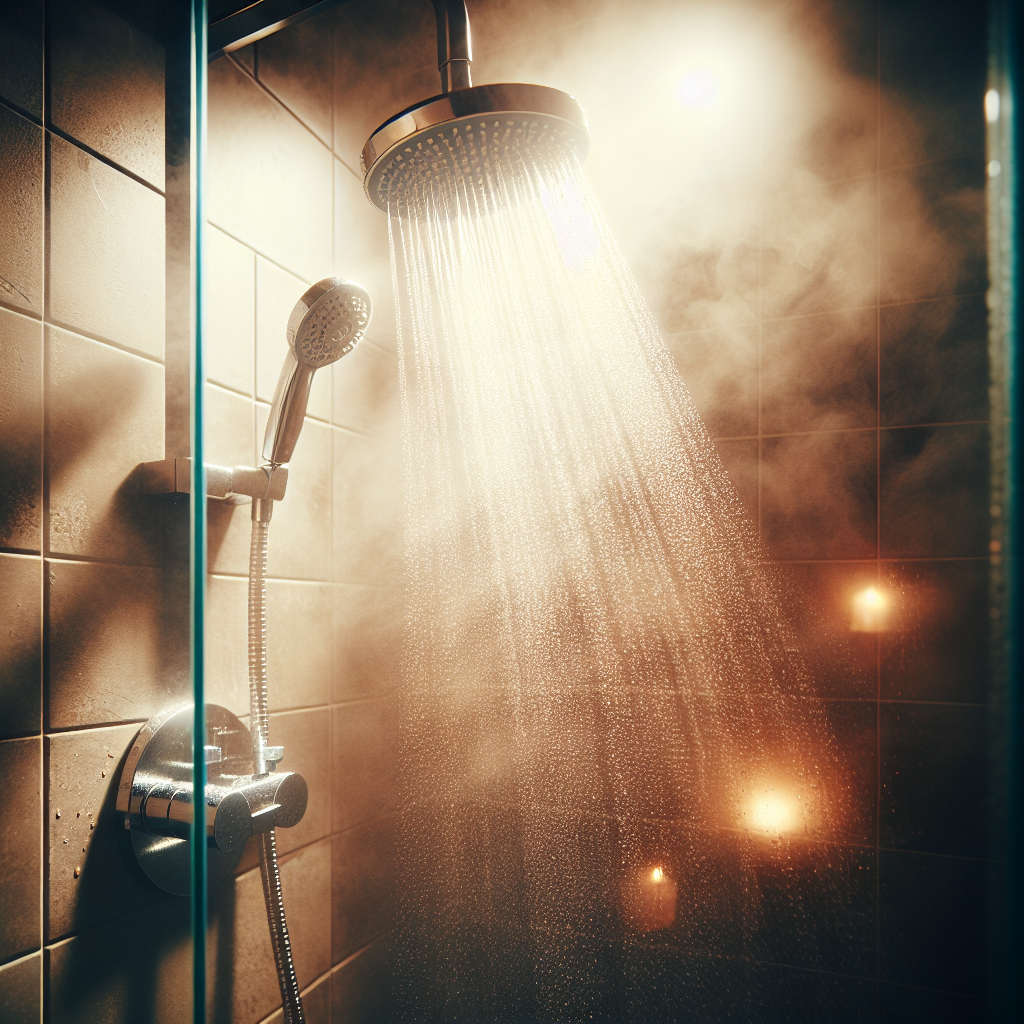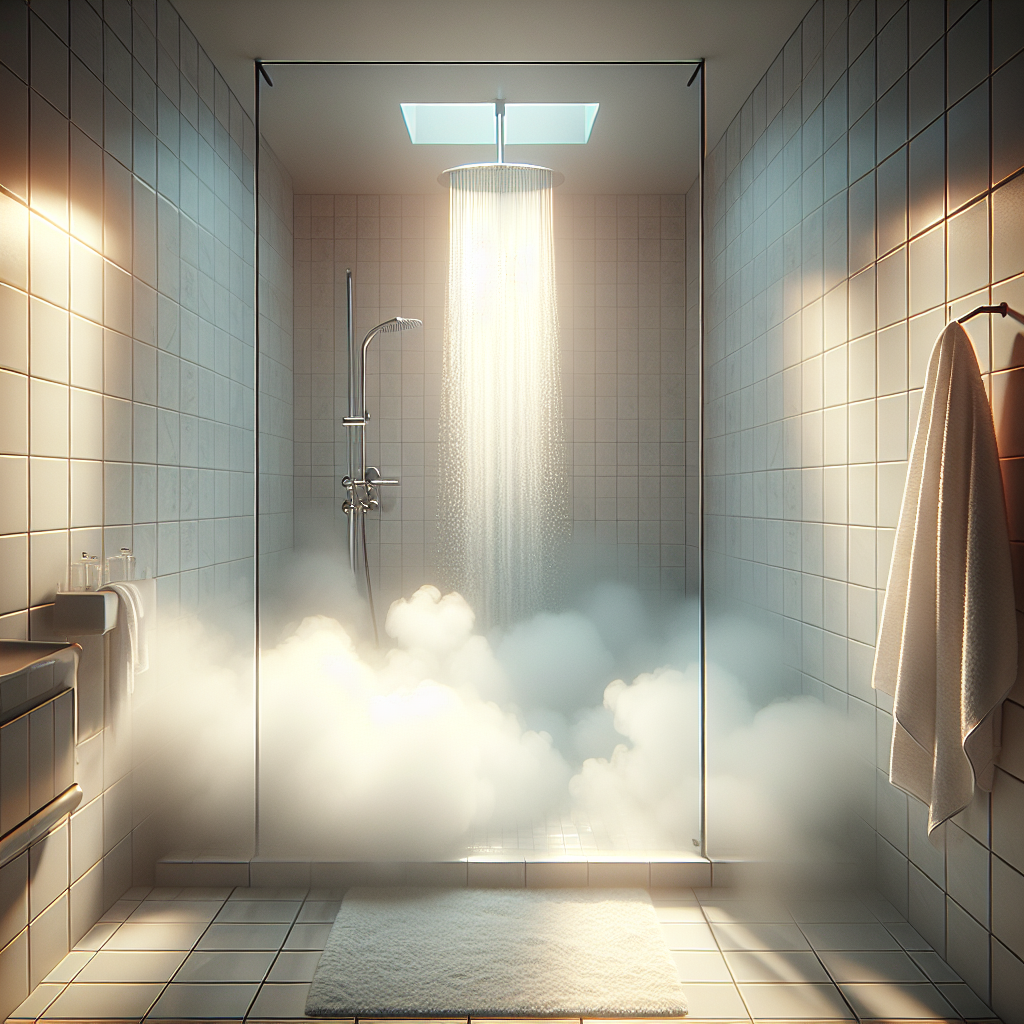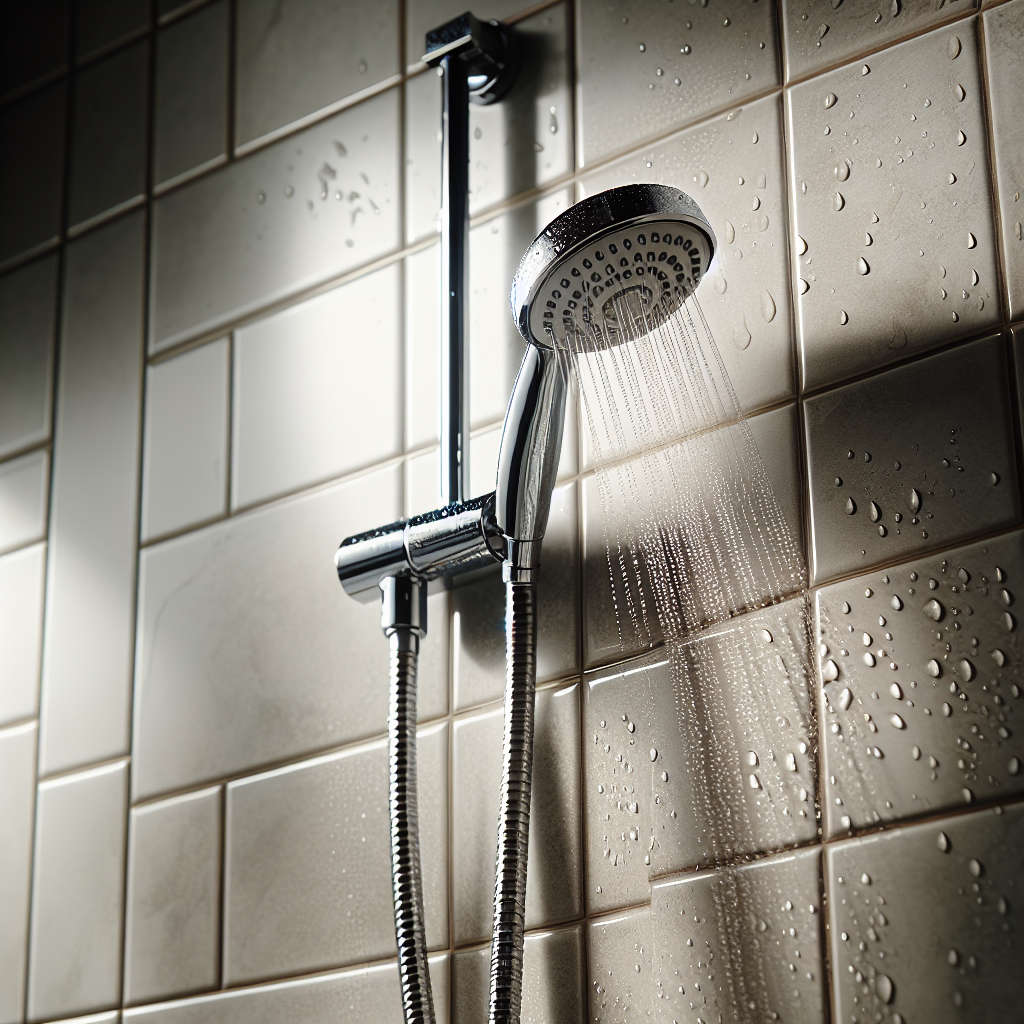
Article-at-a-Glance
Understand why hot showers can pose a burn risk, especially to children and the elderly.
Discover the safe temperature range for your shower to prevent scalding.
Explore the different types of anti-scald devices available for your bathroom.
Learn how thermostatic mixing valves work to keep your shower temperature consistent.
Get tips on how to maintain a safe shower environment for your entire family.
Turning Up the Heat on Safety: Shower Scald Prevention Essentials
When we think about a relaxing shower, the last thing on our minds is the potential danger lurking when the water gets too hot. But the truth is, a moment of inattention or a sudden change in water pressure can lead to serious burns. This article will walk you through the essentials of scald prevention, ensuring your family’s safety without sacrificing the comfort of your daily shower.
Why Hot Showers Can Turn Dangerous
Hot showers are a comfort for many, but without the right precautions, they can quickly become hazardous. The skin of young children and the elderly is thinner and more delicate, making them particularly vulnerable to scalds. A sudden burst of hot water can cause a reflexive jerk that might lead to falls, adding injury to burn risk. That’s why it’s so important to have a system in place that keeps the water at a safe temperature.
The Ideal Shower Temperature for Safety
So, what’s the magic number for shower water temperature? Aim for a range between 100°F and 108°F. This is warm enough for comfort but cool enough to be safe, even for the sensitive skin of kids and seniors. It’s not just about setting your water heater right; it’s about ensuring the temperature stays consistent throughout your shower.
Spotlight on Anti-Scald Technology
Now, let’s talk about the heroes of the bathroom: anti-scald devices. These nifty gadgets are designed to keep your water temperature from reaching scalding levels. They come in various types, each with its own method of protecting you and your loved ones from unexpected heat spikes.
Thermostatic Mixing Valves: Your Shower’s Guardian
Among the most reliable protectors against scalds are thermostatic mixing valves. They work by mixing hot and cold water to a pre-set temperature before it reaches your showerhead. Even if someone flushes the toilet or turns on the dishwasher, your shower temperature stays the same, safeguarding your peaceful shower experience.
Pressure Balance Valves: Keeping Temperatures in Check
Another guardian against sudden temperature spikes is the pressure balance valve. This device maintains an even water temperature in your shower by adjusting the flow of hot and cold water in response to changes in water pressure. So, if someone elsewhere in the house turns on a faucet or flushes a toilet, you won’t be rudely surprised by a burst of hot water.
Prevents temperature changes when water is used elsewhere in the house.
Simple yet effective mechanism that reacts to pressure fluctuations.
Easy to install in most shower systems.
Cost-effective solution to enhance bathroom safety.
Ideal for households with basic shower setups.
Smart Shower Systems: The Future of Scald Prevention
As technology advances, so does our ability to prevent scalds. Smart shower systems are the cutting-edge solution, offering features like digital temperature control and even voice commands. With these systems, you can set and monitor your shower’s temperature with precision, ensuring a safe and enjoyable experience every time.
“Imagine stepping into a shower that greets you with the perfect temperature, every single time. Smart shower systems are making this a reality while keeping safety at the forefront.”

Your Ultimate Guide to Anti-Scald Practices
While devices are great, they’re just part of the solution. Let’s walk through some best practices to ensure your shower is a safe haven from scalds.
Setting the Right Water Heater Temperature
Start at the source: your water heater. Setting it to the right temperature is critical. The U.S. Consumer Product Safety Commission (CPSC) recommends a setting of 120°F to prevent scalds. This temperature is hot enough for a satisfying shower but not so hot that it poses a burn risk.
Check your water heater’s default setting; it might be higher than necessary.
Use a thermometer to test the water temperature at different faucets.
Adjust the water heater thermostat and recheck until you hit the sweet spot.
Testing and Adjusting Your Shower’s Temperature
Don’t just set and forget your water heater. Test your shower’s temperature regularly with a simple thermometer. If you find the temperature is too high or too low, make small adjustments to the water heater and retest. This ensures that your shower remains a safe zone for everyone.
Use a waterproof thermometer to check the shower water temperature.
Make incremental changes to the water heater to avoid overshooting the ideal temperature.
Involve the whole family in learning how to test and adjust the temperature safely.
Installation Insights: Retrofitting Your Shower Safely
Installing anti-scald devices doesn’t have to be a daunting task. Whether you’re handy or prefer to call in a professional, retrofitting your shower can be done efficiently and effectively. Let’s dive into how you can upgrade your bathroom with these safety devices.
Selecting the Right Anti-Scald Device for Your Home
Choosing the best anti-scald device is like picking a guardian for your family’s safety. You’ll want to consider your home’s plumbing system, your budget, and the specific needs of your household. Thermostatic mixing valves are top-notch for precise temperature control, while pressure balance valves are the go-to for preventing sudden temperature changes. Some homes might benefit from the advanced features of smart shower systems. Think about who uses the shower and what risks are most likely in your home to make the best choice.
Thermostatic mixing valves for homes with young children or elderly family members.
Pressure balance valves for a quick and cost-effective safety upgrade.
Smart shower systems for tech-savvy homes wanting digital control.
Consider the compatibility with your existing shower setup.
Don’t forget to factor in the ease of maintenance and future upgrades.
DIY vs. Professional Installation: What You Should Know
Installing an anti-scald device might seem like a weekend DIY project, but it’s important to weigh the pros and cons. DIY can save you money, but without the right tools or know-how, it could lead to more problems. Professional plumbers bring expertise and a guarantee of workmanship. If you’re not confident in your plumbing skills, it’s wise to call in the pros. They can ensure your device is installed correctly and safely, giving you peace of mind.
DIY can be cost-effective but requires a good understanding of plumbing.
Professional installation ensures the job is done right the first time.
Consider the warranty and support offered by hiring a professional.
Some devices may require special tools or knowledge that professionals already have.

Maintaining a Scald-Free Shower
A scald-free shower isn’t just about installation—it’s about ongoing vigilance. Regular maintenance is key to ensuring your anti-scald devices continue to protect your family. This includes routine checks, cleaning to prevent mineral buildup, and testing the water temperature for accuracy. Staying proactive with maintenance keeps your devices in top working order.
Regular Checks and Balances for Temperature Control
Just like any safety feature in your home, anti-scald devices need regular checks. Test the water temperature monthly with a thermometer, and watch for any signs of malfunction. If you notice fluctuations or a drop in water pressure, it might be time for a tune-up or a call to your plumber. Keeping a log of these checks can help you track your shower’s performance over time.
Monthly temperature checks with a reliable thermometer.
Look out for changes in water pressure or temperature consistency.
Keep a maintenance log to monitor your shower’s safety performance.
Consider seasonal adjustments for changes in incoming water temperature.
Long-Term Tips for Keeping Your Shower Safe
To ensure your shower remains a safe place for years to come, think long-term. Educate your family on the importance of scald prevention. Keep an eye on any updates to safety codes or new devices on the market. And remember, as your family grows and changes, so might your safety needs. Be prepared to adapt and upgrade your anti-scald measures as necessary.
Stay informed on the latest in shower safety technology and best practices.
Teach family members about the risks of scalding and how to avoid them.
Be ready to adjust your safety measures as your household’s needs change.
Consider an annual professional inspection for peace of mind.
Empower Your Entire Household
Scald prevention is a team effort. Make sure everyone in your home understands the risks and knows how to use the shower safely. Create simple guidelines for the kids and check in with elderly family members to ensure they feel confident in the shower. Empowering your household with knowledge and the right tools is your best defense against scalding.
Set clear rules for children about shower use and temperature settings.
Regularly discuss shower safety during family meetings.
Equip showers with easy-to-read thermometers for everyone to monitor.
Install grab bars and non-slip mats for additional safety measures.
Encourage everyone to report any issues with water temperature immediately.
Teaching Kids and Seniors About Shower Safety
Kids and seniors are the most at risk for scalds, so take extra time to teach them about safe shower practices. Show them how to adjust the water temperature and explain why it’s important to wait a few seconds before stepping in. Make sure they know who to call for help if the water gets too hot. With a little education, you can make the shower a safer place for the most vulnerable members of your family.
Demonstrate how to adjust the temperature and test the water before use.
Install anti-scald devices at a height that is accessible for all users.
Provide clear instructions on what to do in case of a scalding incident.
Encourage open communication about any difficulties or concerns with the shower.
Adaptive Tools and Techniques for Those Who Need Extra Care
For family members who need a little extra help, consider adaptive tools and techniques. Handheld showerheads, temperature-regulated faucets, and visual aids can make showering safer and more comfortable. Remember, the goal is to create an environment where everyone can maintain their independence without compromising on safety.
Handheld showerheads allow for better control and reach.
Temperature-regulated faucets prevent accidental burns.
Visual or auditory temperature indicators can assist those with sensory impairments.
Regularly review and update these tools to suit changing needs.

Frequently Asked Questions (FAQ)
What is the ideal temperature to set your water heater to prevent scalds?
The ideal temperature setting for your water heater to prevent scalds is 120°F. This temperature is hot enough for most uses around your home but not so hot that it will cause burns instantly. By setting your water heater to this temperature, you’re taking a significant step towards making your home safer for everyone.
How do anti-scald devices work?
Anti-scald devices, such as thermostatic mixing valves and pressure balance valves, work by regulating your shower’s water temperature. Thermostatic valves mix hot and cold water to a pre-set temperature, while pressure balance valves adjust the water flow to maintain a consistent temperature. Both types of devices help to prevent sudden spikes or drops in water temperature, protecting you from scalding.
Can you install an anti-scald device in an existing shower?
Yes, you can install an anti-scald device in an existing shower. It may require some plumbing adjustments, but it’s a worthwhile investment for the added safety. Whether you choose to do it yourself or hire a professional, make sure to follow the manufacturer’s instructions closely to ensure proper installation and operation.
Are there specific brands or models of anti-scald devices that are recommended?
When it comes to anti-scald devices, several trusted brands and models come highly recommended. It’s essential to choose one that’s compatible with your plumbing system and meets the safety standards set by relevant authorities. Brands like Moen, Delta, and Kohler are well-known for their quality and reliability. Look for devices with certifications from organizations like the American Society of Sanitary Engineering (ASSE) to ensure they meet strict safety guidelines.
Moen: Known for its innovation and reliability in anti-scald technology.
Delta: Offers a range of pressure balance and thermostatic valves with easy-to-use features.
Kohler: Provides high-quality valves that integrate seamlessly with their shower systems.
Always check for ASSE certification for assurance of quality and safety.
Read reviews and ask for recommendations from professionals or other homeowners.
Remember, the best device for your home will depend on your specific needs, budget, and existing fixtures. Don’t hesitate to consult with a plumbing professional to make an informed decision that ensures safety and compatibility with your home’s setup.
What should I do if I notice inconsistent shower temperatures?
Inconsistent shower temperatures can be a sign of a malfunctioning anti-scald device or an issue with your home’s plumbing. The first step is to investigate the cause. Check if the temperature fluctuations coincide with water use elsewhere in the house. If they do, it could be a sign that your pressure balance valve needs adjustment or replacement. If the temperature is consistently too hot or too cold, your thermostatic valve may require recalibration.
Monitor the shower temperature over a few days to identify patterns.
Inspect your anti-scald device for any visible signs of damage or wear.
Test other faucets in the house to see if the issue is isolated to the shower.
Consult the device’s manual for troubleshooting tips or contact the manufacturer.
If you’re unsure, call a professional plumber to diagnose and fix the problem.
Regular maintenance and prompt attention to any issues will help ensure your shower remains a safe and comfortable place for your family. Don’t ignore temperature inconsistencies, as they can be early warnings of potential safety risks.
In conclusion, safeguarding your family from scalding in the shower is a multifaceted approach that involves the right equipment, proper installation, and ongoing vigilance. By understanding the dangers of hot showers, setting the ideal temperature, and choosing the right anti-scald devices, you can create a safe shower environment. Maintenance and education are equally important, ensuring that every family member knows how to use the shower safely and what to do if something goes wrong.
Remember, shower safety is not just about installing gadgets; it’s about creating a culture of awareness and prevention in your home. By empowering your family with knowledge and the right tools, you’re not just preventing accidents; you’re nurturing a space where everyone can relax and rejuvenate without fear. So take the time to assess your bathroom, invest in quality safety devices, and foster safe practices. Your family’s well-being is worth every drop of effort.



